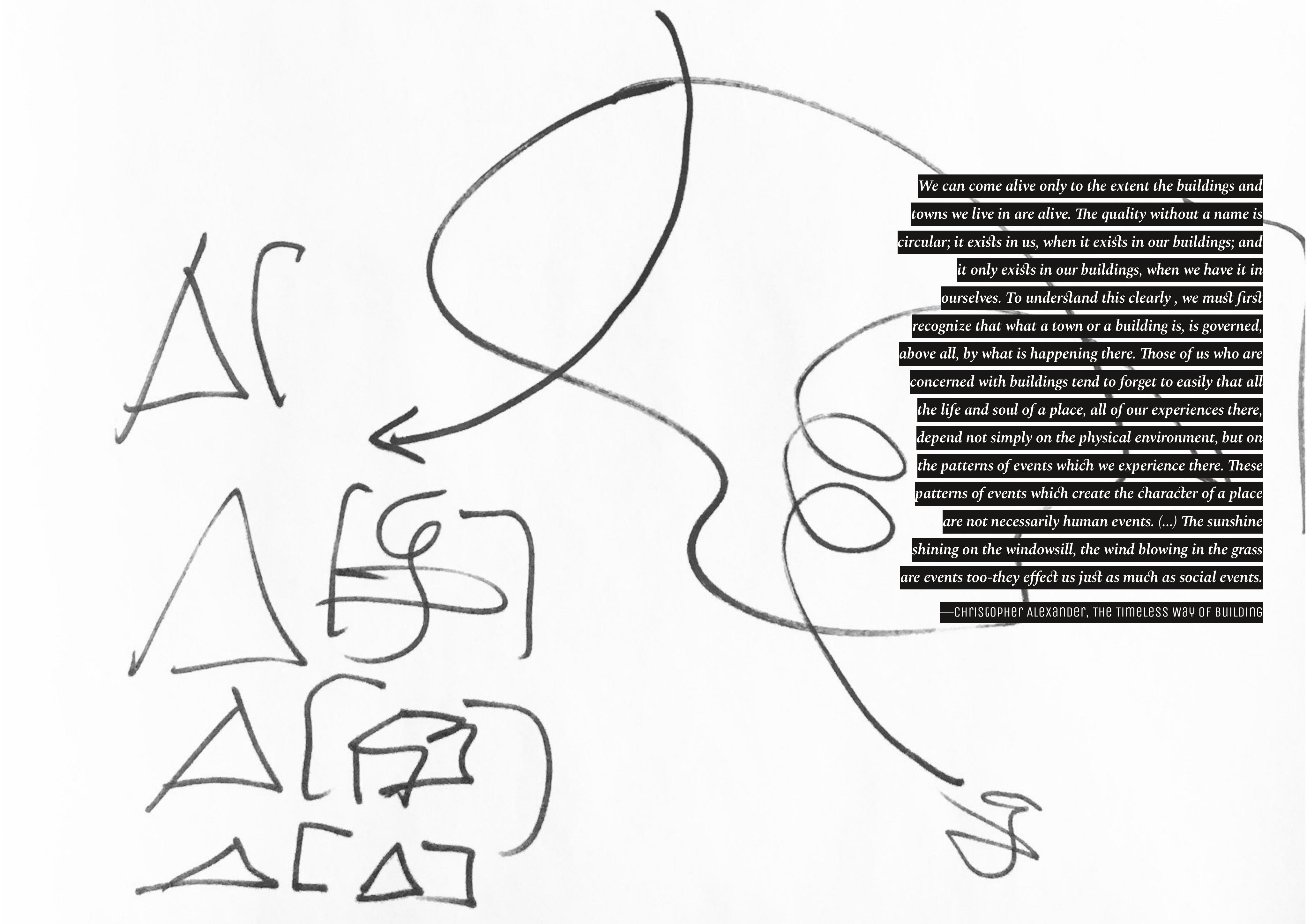Philosophy begins in wonder. And, at the end, when philosophic thought has done its best, the wonder remains. Alfred North Whitehead, Modes of Thought
On Designing Bridges. Part I
By Stacey Moran and Adam Nocek
The plane is like a desert that concepts populate. The only regions on the plane are the concepts themselves, but the plane is all that holds them together…The plane of immanence is not a concept that is or can be thought but rather the image of thought, the image thought gives itself of what it means to think, to make use of thought, to find one's bearings in thought. Deleuze and Guattari, Thousand Plateaus

The Royal Scientist secures for himself a unique existence. Heidegger speaks of the way in which a man - a being among beings - “pursues science” and through this process, the irruption of one being called “man” transforms into the whole of beings: Man. Science shows Man what he is and how he is. Science reveals this being among beings to be an object of investigation, an object to be known, grasped, and revered as the Being through which all other beings come to have meaning: homo sapiens. But here’s the catch: it is only through Science that Man is revealed to be the kind of being that grounds all other beings. Science announces the end of all other revelations and is an antidote to all other delusions, hallucinations, and phantasms.
To make manifest: the Royal Scientist reveals and thus secures himself to himself. And yet the history of “to manifest” lies not in the realm of knowledge, but in delinquency: “to be caught in the act.” To make manifest as Man, a being among others—is this not a form of delinquency or perhaps one might say, conjuring, to make oneself appear to the world in such a way? Surely this magical manifestation obliges some sort of calling out?In each of us there is, as it were, an ascesis, in part turned against ourselves. We are deserts, but populated by tribes, flora and fauna…And all these clans do not undermine the desert, which is our very ascesis. On the contrary, they inhabit it, they pass through it, over it Gilles Deleuze, Dialogues
The Royal Scientist/Man, then, conjures up such an existence for himself. Because technology is central to the work of science, we should perhaps call him the Royal Technoscientist. He continually invents new technologies in order to see, witness, calculate, and experiment on the world. Science and technology thus join forces, go hand in hand as a means for “crossing the great distances” between human knowledge and the world. The knower observes and learns. Technology is his tool for achieving greater success, crossing voids and filling in remaining gaps in human knowledge of the objective world. Technoscientific Man waves his wand and reduces the world to calculation, abstraction, mathematics, algorithms, models.A witch is, actually, a successful (in the sense of surviving) deviant. You have a cultural, ideological, social, what-not pattern which is, for that society in question, normal (and, importantly, this is understood as a synonym for natural). Most people survive because they conform to these patterns, because they behave normally. […] But then suddenly you get a deviant which survives, and since it does not draw its support from the normal pattern, […] that deviant is understood as drawing its support from “unknown,” “supernatural” sources. […] If we cannot survive without our order, how can she [the witch] survive in solitude? Hers must be indeed a very powerful order to exist so independently, without all the inter cooperation and individual compromise which we have to go through to survive. And if it is so powerful, then it could destroy us. We must try to destroy it first. Maya Deren, From the Notebook of Maya Deren
There is a young scientist who sees an empty space between himself and the world. Between homo sapiens, the knower, and cosmos, the ordered whole (which is pure possibility for it is as yet unknown), a gulf spreads out. The energetic young scientist seeks to fill these gaps by building bridges. He steps out, walks across the vastness he calls the unknown, the immense gulf that lies between himself and the world, and what does he see? More emptiness, the unfurling of new distances growing out in every direction. Science offers Man more than simply knowledge of himself; science unveils an endless proliferation of Opportunity, of empty space for the engineering scientist to cross.But in the real world it is more important that a proposition be interesting than that it be true Alfred North Whitehead, Process and Reality
The cosmos must therefore be distinguished here from any particular cosmos, or world, as a particular tradition may conceive of it. Nor does it refer to a project designed to encompass them all . . . In the term cosmopolitical, cosmos refers to the unknown constituted by these multiple, divergent worlds, and to the articulations of which they could eventually be capable, as opposed to the temptation of a peace intended to be final, ecumenical: a transcendent peace with the power to ask anything that diverges to recognize itself as a purely individual expression of what constitutes the point of convergence of all” Isabelle Stengers, Cosmopolitics
What types of bridges does the young scientist build? Waving his magic man, the scientist conjures as many bridges as there are gaps, gulfs, gorges, and gullies in the universe. There are bridges to span the gulf between our two bodies. Bridges to cross the distance between our minds and the ideas hidden within. Bridges to fill the gap between here and there, between life and death, between the spectator and the exhibition, between the viewer and the work of art, between the past and the present…and with each new bridge, my, how the distances grow!
I’m trying to subjectify the universe, because look at where objectifying it has gotten us. To subjectify is not necessarily to co-opt, colonize, exploit. Rather, it may involve a great reach outward of the mind and imagination.“ Ursula K. Le Guin, Deep in Admiration
How many distances can homo sapiens be expected to cover?

Ideas at first considered outrageous or ridiculous or extreme gradually become what people think they’ve always believed. How the transformation happened is rarely remembered, in part because it’s compromising: it recalls the mainstream when the mainstream was, say, rabidly homophobic or racist in a way it no longer is; and it recalls that power comes from the shadows and the margins, that our hope is in the dark around the edges, not the limelight of center stage. Our hope and often our power. Rebecca Solnit, Hope in the Dark
Dust and Shadow Reader Vol. 1. Previous: objects and cairns. Next: walking exercises.
References: bibliography

